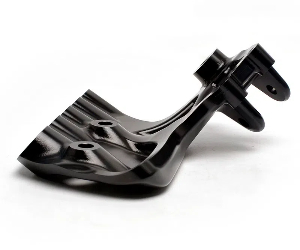
3D Printing (Additive Manufacturing) builds parts layer by layer from digital models. Common technologies include:
Injection Molding forces molten plastic (or metal) into a mold under high pressure. Ideal for mass production of identical parts.
| Factor | 3D Printing | Injection Molding |
|---|---|---|
| Setup Cost | Low (No tooling required) | High (Molds cost $1,000–$100,000+) |
| Per-Unit Cost | High for mass production | Very low at scale |
| Best For | Prototypes, low-volume custom parts | High-volume production (1,000+ units) |
Break-even Point: ~100–1,000 units (after which injection molding becomes cheaper).
Best Use:
| Aspect | 3D Printing | Injection Molding |
|---|---|---|
| Material Range | Plastics, resins, metals, ceramics | Mostly thermoplastics (ABS, PP, PC) |
| Strength | Layer bonding can weaken parts | Homogeneous, high strength |
| Flexibility | Limited elastomers (TPU, etc.) | Wide range (rigid to flexible) |
Post-Processing Needed?
| 3D Printing | Injection Molding |
|---|---|
| Prototypes & concept models | Mass-produced consumer goods |
| Custom medical implants | Bottle caps, automotive parts |
| Low-volume aerospace components | Toys, electronic housings |
| Complex geometries (lattices, etc.) | High-strength structural parts |
Choose 3D Printing If:
Need fast prototypes or custom one-offs.
Complex, unmoldable geometries.
Low volumes (<500 parts).
Choose Injection Molding If:
Producing 10,000+ identical parts.
Need high strength & smooth finish.
Cost-per-unit matters most.
Hybrid Approach? Many companies use 3D printing for prototypes and injection molding for final production.
3D Printing – Fast prototyping in 24–72 hours (FDM, SLA, SLS, metal).
Injection Molding – Low-cost production with quick-turn molds.
End-to-End Solutions – From design to finishing.
Get a Quote Today! 🚀 Let us help you decide the best manufacturing method for your project.
📞 Contact us for expert advice on 3D printing vs. injection molding!